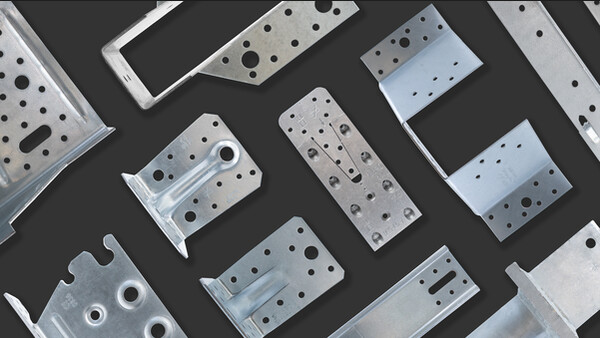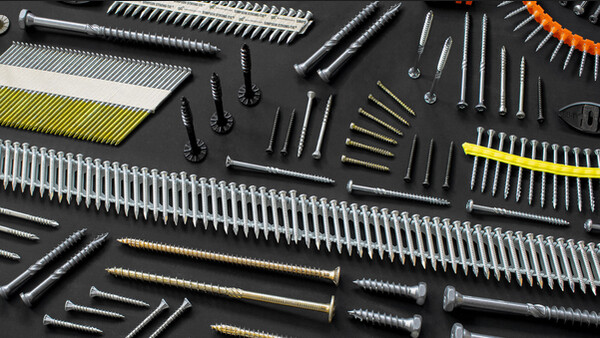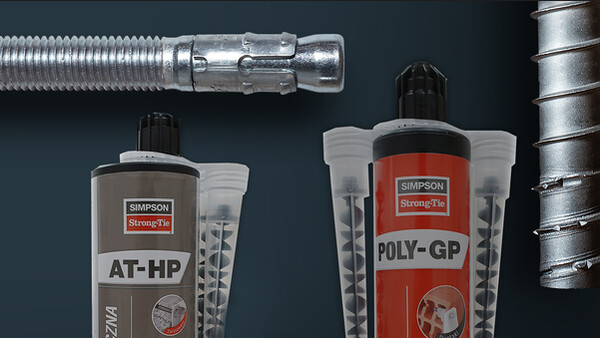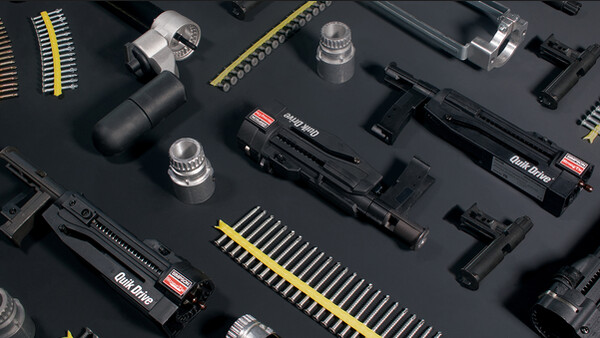CNA - CONNECTOR Nail
The standard fasteners specified to obtain the declared load capacity of our connectors are CNA nails. Keeping all the connection properties declared in our catalog, the technical user is obliged to use connectors specified in the tables when installing Simpson Strong-Tie couplings.
Only when these guidelines are followed will the connection achieve the load capacity declared in the catalogs and approvals.
To assess the correctness of the assembly of carpentry joints, the CNA nails have been additionally marked. From now on, a number will appear on the head of the nail that will denote the length of the connector. This will enable a comprehensive assessment of the correctness of the joint assembly, including the length of the connectors used.
To ensure the full range of application of our connectors in structures, all our connectors for connectors are available in various protective coatings and can be adapted to all classes of use of the structure.
CSA - CONNECTOR Screw
An alternative solution that is acceptable is fastening the connectors with CSA screws.
CSA screws are the second (after CNA nails) type of system fasteners for Simpson Strong-Tie connectors. CSA screws are used in situations where the contractor prefers screwing instead of hammering, or when we want to disassemble the structure, or when it is necessary to obtain increased load capacity of the connection.
CNA nails are the standard fasteners specified to obtain the declared load capacity of the joint.
It is permissible to replace the CNA nails with CSA screws without the need to perform additional calculations, if the change is carried out in accordance with the table below.
| CNA nails | CSA screws |
|---|---|
| 3,1 x 40 | 4,0 x 30 |
| 4,0 x 35 | 5,0 x 35 |
| 4,0 x 40 | 5,0 x 35 |
| 4,0 x 50 | 5,0 x 40 |
| 4,0 x 60 | 5,0 x 40 |
| 4,0 x 75 | 5,0 x 50 |
| 4,0 x 100 | 5,0 x 50 |
CNA - collated CONNECTOR Nail
With the development of pneumatic tools and devices with a feeder, nails and screws on tape are becoming more and more popular. Our CNA and CSA fasteners combine strength with ease of assembly while speeding up assembly work.
High-quality nails and collated screws should be included in the equipment of every company dealing with the automated production process of frame houses with the use of carpentry joints.
Special solutions: SSH Hex-Head CONNECTOR Screw
SSH and SSF screws are an excellent alternative to classic carpentry screws for wood. They can be used as a classic connector to connect two wooden elements or used together with carpentry joints wherever it is necessary to shorten the assembly time and the connection does not require maximum loads. The conical shape under the head ensures a perfect fit in the joint opening, creating a secure installation.
The fasteners have been secured with a special Impreg + protective layer, which ensures very good corrosion resistance and allows them to be used outdoors. The Impreg + protective layer ensures a low risk of galvanic corrosion in combination with aluminum or stainless steel. SSH and SSF connectors can be used to create a connection in light wooden structures of wooden garden architecture.
Nails for I-beam type N:
Contrary to the basic range of products where CNA4.0 ring nails are used, square twisted nails N3.75x30 and round smooth nails N3.75x75 are used in the joints of I-beams. The use of these nails guarantees the correct execution of connections and guarantees that the declared load capacity of the connection is maintained. Particular attention should be paid to the information and additional comments presented in the product description. One of the most common mistakes is choosing the wrong nails. CNA4.0 ring nails should not be used (with a few exceptions) because they have a tendency to delaminate the stripes of I-beams.
Spacing, edge and end distances and minimum thicknesses:
Screws loaded transversely and / or axially
Minimum screw distances and distances from the edge and end of timber for screws with
and without pre-drilling are given in EN 1995-1-1 (Eurocode 5).
For screws without pre-drilling, minimum distances from loaded and unloaded end
d ≥ 8mm and thickness wood t <5d
The minimum distances from the unloaded edge perpendicular to the grain can be reduced to 3d also when t <5d, when the spacing parallel to the grain and the distance from the end is at least 25d
Screws only axially loaded
For screws d ≤ 8mm loaded only axially, the following minimum distances and distances from the edge and end apply alternatively to the minimum wood thickness of t = 12d for screws without pre-drilling:
- spacing parallel to the grain: a1 = 5d
- spacing perpendicular to grain: a2 = 5d
- a2 = 2.5d if a1 × a2 = 2.5d2 for each screw
- Distance from end: a3 = 5d
- Edge distance: a4 = 4d









